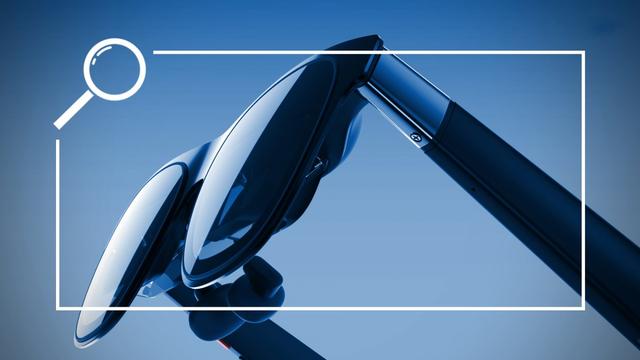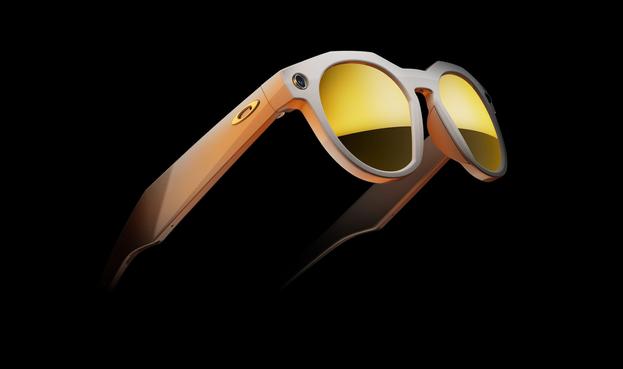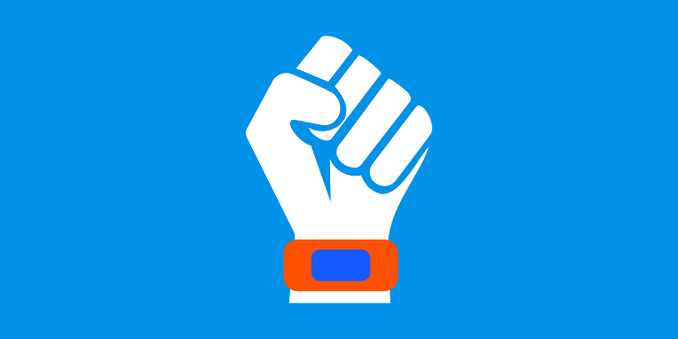Zwischen tragbarem Kino und AR-Versprechen: Was Display-Brillen wirklich können
Display-Brillen werden oft irreführend als "AR-Brillen" vermarktet. Was die Technologie wirklich kann und wo ihre Grenzen liegen, klären wir in diesem Artikel.

Zwischen tragbarem Kino und AR-Versprechen: Was Display-Brillen wirklich können
Display-Brillen werden oft irreführend als "AR-Brillen" vermarktet. Was die Technologie wirklich kann und wo ihre Grenzen liegen, klären wir in diesem Artikel.

Design Milk : Oakley’s Meta HSTN Smart Glasses Give You Constant Access to AI Features https://design-milk.com/oakleys-meta-hstn-smart-glasses-give-you-constant-access-to-ai-features/ #artificialintelligence #wearabletechnology #wearabledevices #Style+Fashion #SmartGlasses #wearabletech #Technology #eyeglasses #sunglasses #wearables #wearable #eyewear #glasses #Oakley #Main #META #AI

Cool wearable things that I'm making for myself this week:
- AnarchoSocialist hat.
- Indigenous beaded flower pin.
- Silver sequins tank top.
I love #creating interesting things.
I love making my own #wearables.
Photos to follow
3. They try not to leave people behind. If my smartwatch brand decides to sunset the support, I am fine, I am cool, because I carefully looked in Gadgetbridge to make sure their free app covered the device beforehand. Folks, always check Gadgetbridge before buying #wearables https://gadgetbridge.org/

Experts call for cancer warnings on alcohol, Apple's F1 movie promo angers iPhone users, man survives fish stabbing, RFK Jr.'s wearable device vision, how airlines price discriminate, wildfires' cooling effect, and tiny lizards' survival. #alcohol #cancer #apple #iphone #fishstabbing #rfkjr #wearables #airlines #wildfires #lizards
Podcast: https://open.spotify.com/episode/4A4RiLeTb1n7mii0JUwBTV
No stronger reason on the planet not to wear them: He recommends them, likely wants to require them, and they are glorified data trackers.
"US Health Secretary Kennedy says HHS to launch campaign to encourage wearable devices"
"We think that wearables are a key to the MAHA agenda, Making America Healthy Again ... my vision is that every American is wearing a wearable within four years," Kennedy said.
NO. JUST NO.
Alipay+, Meizu: Are Smart Glasses the Future of Payments?
Alipay+ and Meizu launch smart glasses payments technology, extending digital payments beyond mobile devices
https://fintechmagazine.com/articles/alipay-meizu-are-smart-glasses-the-future-of-payments
Wie verbreitet sind #Wearables in
zur Erfassung von #Gesundheitsdaten – und wer nutzt diese Geräte?
In einer aktuellen Publikation geht es um den Einsatz von Fitnessarmbändern, Fitnesstrackern und Smartwatches – und ihr Potential für die Gewinnung von Informationen in Gesundheitsstudien.
Ein Fazit: Gesundheitsdaten aus Wearables sind vielversprechend – aber sie spiegeln nicht die Gesamtbevölkerung wider. Wer keine Geräte nutzt, bleibt datenmäßig „unsichtbar“.
Ihr könnt @ct_uplink jetzt auch auf #PeerTube folgen, schauen, teilen und kommentieren. Hier die Folge von letzter Woche zu #Smartwatches, wo diese tatsächlich nützlich sind:
https://peertube.heise.de/w/9w3UJeuwWsMjrNE6v9t8UD
Gerne teilen.
#AndroidWearOS #Apple #AppleWatch #Fossil #GalaxyWatch #Garmin #Google #PixelWatch #Samsung #Smartwatch #Smartwatches #Tizen #WearOS #Wearables #ctuplink #ctmagazin #heiseonline @ct_Magazin
Is there an easy way to remotely monitor another person's pulse? My partner and I are getting older, and sleep in different rooms at different times. We've both worried about the other dying unbeknownst. I wear a pulse watch, but don't know if it will do what I want. Any ideas, friends? I'd like us to be able to glance at a screen and see a heartbeat. #ageing #wearables #wearable #disability
A $1 billion hearing aid company is reinventing itself using #AI—to destigmatize hearing loss while offering the ultimate personal assistant
https://fortune.com/2025/06/01/starkey-edge-ai-hearing-aid-personal-assistant/
On Hands-On Tech 216, Mikah Sargent tackles a great listener question:
Can your Apple Watch get push notifications when it’s not on the same Wi-Fi network as your iPhone? https://twit.tv/shows/hands-on-tech/episodes/216
Ad-free via Club TWiT: https://twit.tv/clubtwit
#AppleWatch #Wearables #ClubTWiT
Can your Apple Watch still get notifications if it’s not on the same Wi-Fi as your iPhone, and has no cellular plan?
@mikahsargent breaks it down on Hands-On Tech 216. https://twit.tv/hot/216
#AppleWatch #Wearables #Connectivity #HandsOnTech
@thoralf Klar, nur denke ich dass keiner wie'n "#Glasshole" auffallen will und komplexere Dinge Kameras u.ä. bräuchten um die Informationen schwebend darzustellen...
Nen #Dataglove als #Eingabegerät dagegen wäre Imho Essentiell für #WearablePC und #WearableComputing abseits.von gimmicky #Wearables aka. "#TechJewelery"!
Apple reportedly has a 'product renaissance' planned for 2027, here's what's coming
Why so sad techbro? Tariffs getting you low?
"Man, I think I picked a really difficult time to get back into manufacturing hardware."
https://www.youtube.com/watch?v=UCI7N70tNRE
(Eric is actually my favourite techbro, but it's kind of a low bar. And now he has a podcast. Which he daftly titled "Tick Talk", despite there already existing a product in his market space, the "TickTalk" kids smartwatch... CDO probably already being written...)
High-tech sticker can identify real human emotions
https://phys.org/news/2025-04-high-tech-sticker-real-human.html
https://www.europesays.com/uk/46949/ The Apple Watch Just Turned 10. Here’s How Far It’s Come #AccessoriesAndPeripherals #Apple #Fitness #Gadgets #Health #Shopping #Technology #UK #UnitedKingdom #Wearables
Novel Smart Glove for Ride Monitoring in Light Mobility
Introducing two new PebbleOS watches!
One's basically an update of the Pebble 2. The other's an update of Pebble Time.
30 days of battery life!!!!